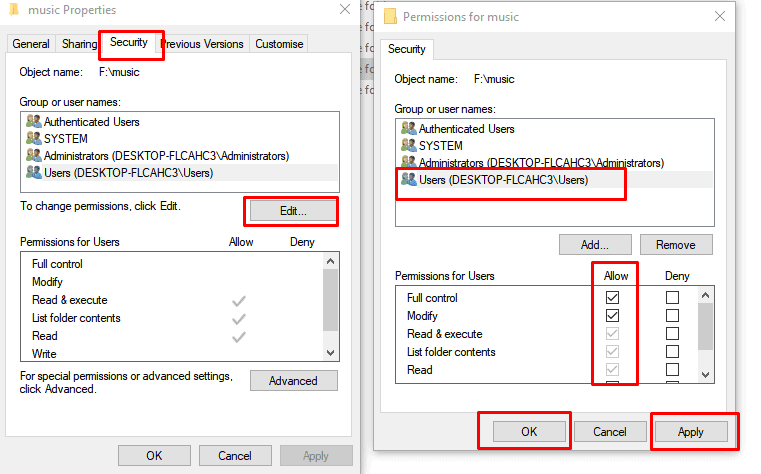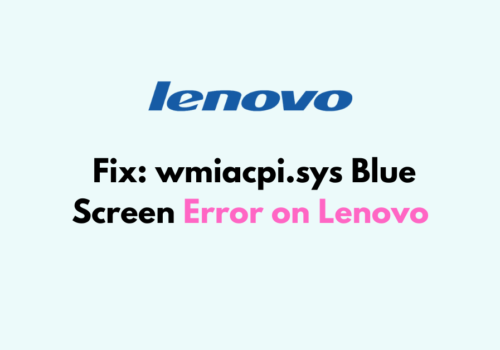Need help installing, updating, or starting a program file on Windows and getting an authorization error to access the path or file?
When you try to install, update or start a program or a file, you receive the following error message:
“Error: Windows cannot access the specified device, path, or file. You may not have the appropriate permission to access the item.”
The error message occurs because you may not have the administrator right to access the specific folder or path.
This article will show you step by step guide on How to fix the Permission error and its causes.
What Causes Windows Cannot Access The Specified Device, Path, Or File Error To Occur?

Windows cannot access the specified device, path, or file, which means you don’t have permission to access the file or path, or the file is corrupted or missed.
The other possible reasons are
- You do not have permission to access the file or the file location, and the file is inaccessible, such as a network site or an external drive not now connected to the PC.
- The file has been relocated or removed.
- The file or shortcut has become corrupted.
- Windows may have blocked the file.
- Your antivirus program may be preventing you from accessing the file.
How To Fix “Windows Cannot Access The Specified Device, Path, Or File You Not Have Appropriate Permission To Access This Item”?
Before getting into the troubleshooting process, ensure that you have logged in as an administrator in your PC. If not and log into your Admin account and try accessing the file or Path.
If the error persists, follow the below troubleshooting steps one by one.
1. Check The Existence Of The File Or File Path
Sometimes you can see the deleted files in the system since it is not updated on your Windows.
You might be confused and click the deleted file, and the error message might pop up.
Refresh your system, and you can see the file has been removed from the system already and the error will be fixed.
Alternatively, you might be accessing the shared files in the network path.
The owner may not enabled permission to access the file, or the network path may accidentally be removed from your system.
The error also occurs if the folder name is changed and the given command does not find the folder name in the given path.
Re configuring the Network drive or folder will fix the issue.
2. Check The File Location On Windows
If the file location is changed or missed, you cannot access the file, and you will get the error message.
Check the file path manually and ensure the file is there.
Also double check your entered path for typo errors.
If the file and file path are correct, follow the next method.
3. Enable The Permission For The File

You must check the file’s permission if a file and file path exist.
- Right-click on the File or Folder
- Select the Security Tab
- Under Group or Username, click on your name to see the permissions you have
- Select Edit, then mark the the check boxes under Allow column for the permissions you need, and then select OK.
4. Check Weather The File Is Corrupted
Check the original file location if you are accessing the folder’s shortcut or the application.
Any changes in the file name and the location might throw an error when you click the shortcut.
Go to the original location of the file or folder and create a new shortcut.
Now double-click on the file, and you can access it without issue.
5. Try Disabling The Antivirus Program
Sometimes the antivirus program might be the culprit, and it will delete or block the access automatically since it cannot find the owner.
Disable the antivirus program and try to install the program or access the file.
If it works fine, then allowing the file or program in the antivirus will fix the issue.
6. Unblock Or Unhide The File
In some cases, the file may be blocked by Windows since it is accessed from an external source like a pen drive or an unknown network path.
The error also occurs if the file is hided by the user.
- To unhide the file, go the folder path or location and select View tab at the top.
- Mark the check box next to the Hidden Items

Now you can change the required modifications on files without any issues.
If error occurs again, you need to check the file’s properties, where you will see the message, “ This file came from another computer and might be blocked to help protect this computer.”
To check for and unblock the file, follow these steps:
- Right-click the blocked file and then select Properties.
- In the General tab, select Unblock if the option is available.
The above methods help you understand the error and access the desired file or program without issues.

